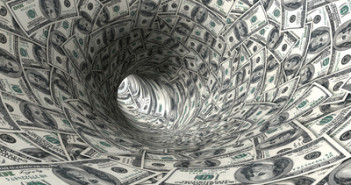The rate cut was the least effective policy option that the European Central Bank had and the euro is now higher than before the cut, say Simon Smith of FxPro. So, a negative deposit rate could could be seen in the first quarter of 2014, and the impact could be strong.
In the interview below, Smith also explains what could push the Fed into action in December, the factors moving the yen and more.
Simon has over seventeen years experience of macro forecasting and investment strategy research. Prior to joining FxPro in May 2010, Simon was a consultant with Thomson Reuters, having spent four years as Chief Economist at Weavering Capital. He has held economic and strategy positions with Standard & Poor’s, together with consultancy firms 4Cast and MMS International. Simon holds an MSc. in Economics from the University of London and a BSc. from Brunel University.

- Do you think that the ECB will leave policy unchanged in December after moving in November? Or could lower inflation figures (and a potential for even lower ones after the deal with Iran) push Draghi to further action?
I don’t see them moving again in December. They need to be both creative and bold in terms of their further policy measure(s) from here, not least because as I said before the event, the rate cut was the least effective option available to them. On a trade weighted basis, the currency is now higher vs. the time of the rate cut, partly because the move in market interest rates was minimal at best. I would see a move to a negative deposit rate in the first quarter, which would be a more negative move for the currency that this month’s rate cut.
- Fed: how much weight does the upcoming Non-Farm Payrolls report have on the decision to taper or not to taper in December?
Of course, it’s pretty crucial given their dual mandate (prices and employment), together with the fact that forward guidance is linked to achieving an unemployment rate of 6.5%. But I think more important has been the successful separation that the Fed has achieved between quantitative easing and rate hikes. Back in early September, futures were pricing Fed rates near 1% by the middle of 2015. Now it is 0.25%. That’s a big change and comes despite the fact that some are now thinking tapering could be seen in December. Markets are no longer spooked into thinking tapering means an imminent tightening of rates. This is more bearish for the dollar and equities, but not drastically dollar bearish, because lower stocks and outflows from emerging markets will still provide dollar support from the tapering decision. Another decent report could well see tapering in December, but it’s this separation that will have paved the way for the Fed to achieve this.
- Will low inflation / deflation be an important theme in 2014?
Naturally it depends where you are. In the US, much of the weaker inflation has come from energy, so I would not see it as an issue. The same largely holds true for the UK. The Eurozone, as a whole, is where the greater risks lie and the ECB have been pretty slow to realise this. Don’t forget it was only two years ago that the ECB were hiking rates. Also, it’s the periphery where low inflation rates are more prominent, because with currency devaluation out of the question, then lower inflation relative to the core is one of the adjustment mechanisms by which these countries can become internally more competitive. The price also has to be higher inflation vs. Germany and higher absolute levels of inflation for Germany, but that is not something Germany is going to accept, for many reasons. The key thing is that globally quantitative easing has not delivered the higher levels of inflation that many were both anticipating and fearing.
- New Zealand enjoyed positive economic indicators and now has a lower exchange rate. Is the ground set for a rate hike sooner than later?
I’m not so sure. Data has been OK, but the economy is not running away and I think the exchange rate could play an important role in the early part of next year. The Aussie still looks vulnerable and the RBA is becoming more vocal and we are seeing AUDNZD at fresh lows for the year. The risk is that a stronger currency does the tightening for the RBNZ, allowing rates to remain on hold for the first half of the year.
- The yen resumed its falls due to various reasons. What factors will have the strongest impact on further weakening of the Japanese currency: the Nikkei, QE tapering, safe haven related moves, etc.?
There is a lot of talk about the yen resuming its weakening trend and on the charts, we’ve certainly broken through some key levels on USDJPY. After the Fed’s move to separate tapering from tightening, I am not seeing tapering as being massively dollar positive. That said, I do see USDJPY moving higher in the first quarter, but it’s not going to be anything like the moves were seeing in the same period a year ago. Inflation is falling short of expectation and progress on Abe’s third arrow of structural reforms is proving pretty weak. The past twenty years in Japan has been littered with periods whereby politicians promise loads and deliver very little. There is a real risk that Abenomics falls into that very full dustbin of disappointment. That said, the introduction of the Nippon savings account and the weakened current account position do make the yen a structurally weaker currency that before, which is why I think the weakening trend will continue.
Further reading: New ECB measures could be introduced in December or January
